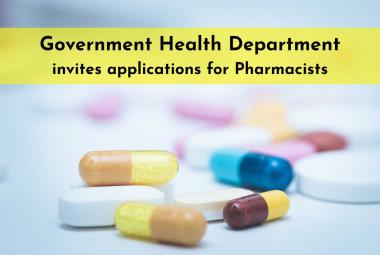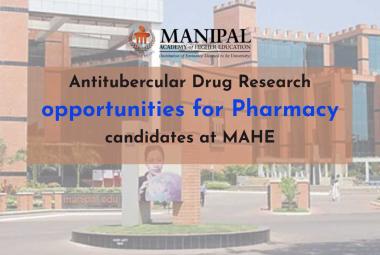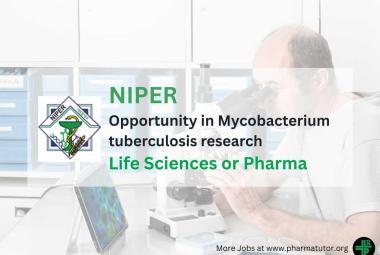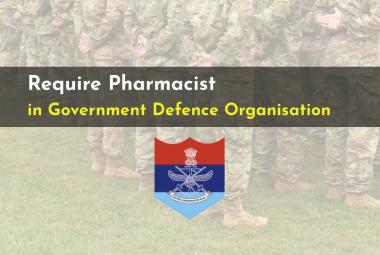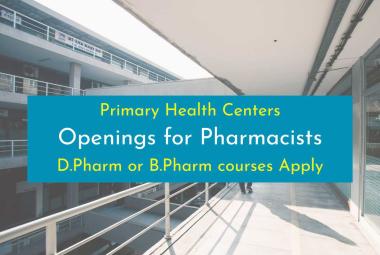{ DOWNLOAD AS PDF }
ABOUT AUTHORS
Priyanka. Kura, Ashwini. Patlolla, Alluri. Ramesh, Vishwanadham. Y*
Department of Medicinal Chemistry Research Division,
Vishnu Institute of Pharmaceutical Education and Research (VIPER),
Narsapur, Medak, Telangana, India
*vishwanadham.y@gmail.com
ABSTRACT
The anti-inflammatory drug activity of petroleum ether (Pet.ether) extract of leaves pentas lanceolata was investigated in rats exploitation egg albumen induced paw oedema model. Experimental animals received 20-25 gms (orally) of the extracts five groups divided., control group (saline), test group 50, 100, 200 mg/ kg the standard group received 15 mg/ kg of diclofenac. The results show that the extracts considerably (p <0.05) reduced paw oedema within the albumen induced anti-inflammatory drug activity.
The leaf extract of pentas lanceolata reduced inflamed hind paw diameter of mice by between 0.98%- 3.99% The diclofenac reduced inflamed hind paw diameter by between 1.12%-4.02%. The qualitative phytochemical screening indicated the presence of saponins, flavonoid, alkaloids, terpenoids and cardiac glycosides. The current study establishes potent antiinflammatory activities of pet ether extracts of pentas lanceolata leaves.
[adsense:336x280:8701650588]
Reference Id: PHARMATUTOR-ART-2569
|
PharmaTutor (Print-ISSN: 2394 - 6679; e-ISSN: 2347 - 7881) Volume 6, Issue 3 Received On: 06/01/2018; Accepted On: 08/01/2018; Published On: 01/03/2018 How to cite this article: Kura P, Patlolla A, Alluri R, Vishwanadham Y; Phytochemical screening and albumin induced antiinflammatory activity of Pentas Lanceolata leaves; PharmaTutor; 2018; 6(3); 27-31; http://dx.doi.org/10.29161/PT.v6.i3.2018.27 |
INTRODUCTION:
Inflammation is a protective response by the body towards cell injury. Cell injury may be due to; necrotic cells or tissue, the introduction of microbes (such as viruses or bacteria), toxins, hypoxia, etc. Inflammation is therefore the body’s way of attempting to remove the primary cause of inflammation and any damage that may have occurred as a result (Healing and repair). However if inflammation did not occur, then the body would be unable to deal with wounds and infections letting them go unchecked and progressively destroy the tissue. All injured organs would therefore be unable to regain function, eventually leading to mortality.
Acute inflammation is usually of sudden onset and short duration following the injury of tissues. The damage may be purely physical, or it may involve the activation of an immune response. Three main processes occur:
• Increased blood flow due to dilation of blood vessels (arterioles) supplying the region
• Increased permeability of the capillaries, allowing fluid and blood proteins to move into the inters space
• Migration of neutrophils and perhaps a few macrophages) out of the venules and into interstitial spaces.
It is also important to remember that chronic inflammation may pose problems to the body; these may be hypersensitivity reactions, autoimmune reactions or organ dysfunction due to the formation of scars/obstructions caused by fibrosis e.g. hay fever (hypersensitivity) or arthritis (autoimmune response) (Kareru PG et.al., 2006).
Materials and Methods:
Collection and preparation of plant materials:
Pentas lanceolata, commonly known as Egyptian Starcluster, is a species of flowering plant in the madder family, Rubiaceae that is native to much of Africa as well as Yemen. It is known for its wide use as a garden plant where it often accompanies butterfly gardens. These leaves are collected from B V Raju institute of technology, Narsapur, Telangana, India.

Plant profile:
Kingdom: Plantae
Division: Magnoliophyta
Class: Magnoliopsida dicotyledons
Subclass: Asteridae
Order: Rubiales
Genus: Pentas
Species: Lanceolata
Family: Rubiaceae
It is a many-branched, somewhat sprawling plant that features 4” wide rounded clusters (corymbs) of star-shaped flowers over a long summer to frost bloom. Elliptic to lanceolata dark green leaves (to 6” long). Flowers are pink, magenta, lilac or less commonly white.
• It is used to anti-bacterial; anti-fungal activity had been reported and also used in beds and borders of garden, containers, and houseplant. Also may be effectively gown indoors under artificial lights.
• Solvents used:
Petroleum ether was used for soxhlation process.
• Extraction:
The leaves of Pentas lanceolata were subjected to fine powder and 1 kg were subjected to continuous successive extraction with solvent petroleum ether in soxhlet extractor. After complete extraction, the solvent (petroleum) was concentrated to water bath and finally dried under reduced pressure to the dryness in rotary evaporator. After drying the respective extract was weighed. (Kamau JK et.al., 2016), (Suman D et.al .,2014)
• Experimental Section
• Animals
Wister albino mice of either sex (weighing 20 - 25g), were bred and kept in cages under standard environmental conditions in the animal house of the VIPER. Experimental protocol was subjected to the scrutiny of the Institutional Animal Ethical Committee and was cleared by the same before starting. The experimental animals were kept in the standard cages in the animal house maintained under standard laboratory condition of an ambient temperature of 25°C with 12 hours daylight and 12 hours darkness cycles. They were fed with standard animal pellets and water a libitum. The study protocol was approved by Institutional Animal Ethics Committee no: 1358/ac/10/CPCSEA.
• Preparation of extract
The leaves were cleaned and dried under shade and reduced to powder using mortar and pestle, and stored in air tight containers until use. The powdered plant leaves were soxhlet extracted using Petroleum ether. The resultant extracts were filtered and evaporated to dryness on steam bath at a temperature of 80C. The dried extract was weighed; the percentage yield was determined and it was preserved in the refrigerator until use. (Vishwanadham Y et.al., 2016)
Acute Toxicity Testing the LD50 values of the extract were determined in mice following intraperitoneal administration as described by Lorke. (Hurley JV, 1972) (Williams JG and Maier RV 1992), (OECD /OCDE, 2001).
• Anti-Inflammatory Test; Thirty Wister albino mice of either sex were divided randomly into 6 groups of five mice each and treated as follows; Group I (control) was not induced with inflammation, Group II (Standard) was induced with inflammation and received diclofenac at a dose of 15mg/kg body weight. Groups, III, IV, V (experimental groups) were induced with inflammation and received the extracts at the dose levels of 50 mg/kg, 100 mg/kg and 200 mg/kg weight. Ravi V et.al. 2009), (Nordqvist ,2015)
This design is summarized in Table 1
|
Group |
Status |
Treatment |
|
I |
Control |
saline |
|
II |
Standard |
albumin+15 mg/kg/bw diclofenac |
|
III |
Experimental group A |
albumin + saline +50 mg/kg bw extract |
|
IV |
Experimental group B |
albumin + saline +100 mg/kg bw extract |
|
V |
Experimental group C |
albumin + saline +200 mg/kg bw extract |
Acute inflammation was induced by injecting egg albumin into the sub- planter surface of the rat hind paw linear circumference, oedema was assessed in terms of difference in zero time linear circumference at the injected paw and it circumference at 30 minutes interval after egg albumin injection. (Posadas I et.al.,2004) (Tilley SL et.al., 2001), Traversa G et.al., 1995).
The percentages inhibition in inflammation was calculated using the formula;
Inhibition % =Ct – Tt /Ct × 100 Where,
Ct=Paw diameter at 30 min after egg albumin administration
Tt=Paw diameter after Treatment.
• Phytochemical Screening of the Plants;
The method described by Trease and Evans were used to chemically analyze the extract for the presence of alkaloids, terpenoids, saponins, flavonoids, cardiac glycosides and steroids.
NOW YOU CAN ALSO PUBLISH YOUR ARTICLE ONLINE.
SUBMIT YOUR ARTICLE/PROJECT AT editor-in-chief@pharmatutor.org
Subscribe to Pharmatutor Alerts by Email
FIND OUT MORE ARTICLES AT OUR DATABASE
• Statistical Analysis;
The group means ± SEM was calculated for each analyte and reported. Significant differences between means were evaluated by one way analysis of variance (ANOVA). Post hoc test analysis was done using Dunne test with SPSS version 16.0 package. Value of P < 0.05 was considered as statistically significant. (Anova, 2000), (Dunnet CW,1964)
RESULTS:
The pet ether leaf extract of Pentas lanceolata showed significant antiinflammatory activity on albumin-induced paw oedema, which was demonstrated by the reduction in inflamed hind paw diameter after extract administration (Figure 1; Table 2).
The anti-inflammatory activity of the extract at the dose levels of 50 mg/kg, 100 mg/kg and 200 mg/kg body weight showed no significant difference and were comparable to normal control.
In the first hour after treatment, the leaf extract of pentas lanceolata at the dose level of 200 mg/kg and also the diclofenac (standard drug) at the dose of 15 mg/kg body weight showed anti-inflammatory drug result by reducing hind paw diameter by 0.98% and 1.12% respectively. But the extract at the dose levels of 50 mg/kg and 100 mg/kg body weight never showed anti-inflammatory activity at this hour.
In the second hour, the leaf extract of pentas lanceolata at the dose of 100 mg/kg and 200 mg/kg weight also as the diclofenac (standard drug) reduced inflamed paw diameter by 0.40%, 1.99% and 2.20% respectively. However, the pet.ether extract at the dose of 50 mg/kg weight never showed anti-inflammatory activity at this second hour.
The anti-inflammatory drug activity of the extract at the dose level of 50 mg/kg and 100 mg/kg showed no significant difference (p<;0.05;). Besides, the anti-inflammatory activity of the extract at the dose level of 200 mg/kg weight was similar to diclofenac.
In the third hour after treatment, the extract at the dose levels of 50 mg/kg, 100 mg/kg, and 200 mg/kg weight, also because the diclofenac (standard drug) reduced the inflamed hind paw diameter by 0.86%, 2.95%, 3.99% and 4.02% severally.
The anti-inflammatory activity of the extract at the dose of 50 mg/kg and 100 mg/kg and 200 mg/kg weight showed no important difference and were similar to diclofenac (standard drug).
|
Treatment |
Dose (mg/kg)
|
1hr |
2hr |
3hr |
|
Normal saline |
|
99.84 ± 0.10b (0.16) |
99.84 ± 0.10b (0.16) |
99.84±0.10b (0.16) |
|
Pet.ether Extract A |
50 |
101.76 ± 0.15b (1.76) |
100.37± .26bc (0.37) |
99.14 ± 0.18b (0.86) |
|
Pet.ether Extract B |
100 |
101.00 ± 0.25b (1.0) |
99.56± 0.77cd (0.40) |
97.05 ± 0.60b (2.95) |
|
Pet.ether Extract C |
200
|
99.02 ± 0.14bc (0.98) |
98.01 ± 0.25de (1.99) |
96.01 ± 0.26b (3.99) |
|
Diclofenac (Std) |
15 |
98.88 ± 0.22c (1.12) |
97.80 ± 0.53e (2.20) |
95.98 ± 0.44bc (4.02) |
Table 2: Significant at P < 0.05. Significantly different compared to test and std
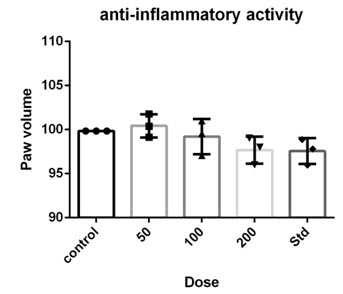
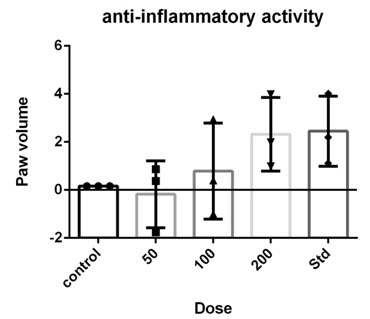
Phytochemical tests of Pentas lanceolata extracts;
The preliminary phytochemical screening reveal the presence of alkaloids, flavonoids, Steroids, saponins and cardiac glycosides, as shown below Table 3.
|
Test |
pentas lanceolata |
|
Alkaloids |
+ |
|
Cardiac Glycosides |
+ |
|
Saponins |
- |
|
Flavonoids |
+ |
|
Tannins |
+ |
|
Carbohydrates |
+ |
|
Steroids |
+ |
Table 3: Phytochemical composition of Pet.ether leaf extract of Pentas lanceolata. Present phytochemical is denoted by (+) sign; absent phytochemical is indicated by (-) sign.
The above result therefore supports their use by traditional healers for various forms of pains and inflammatory conditions such as arthritis and rheumatism.
NOW YOU CAN ALSO PUBLISH YOUR ARTICLE ONLINE.
SUBMIT YOUR ARTICLE/PROJECT AT editor-in-chief@pharmatutor.org
Subscribe to Pharmatutor Alerts by Email
FIND OUT MORE ARTICLES AT OUR DATABASE
DISCUSSION
The present study evaluated for the anti-inflammatory drug activity of Pet.ether leaf extract of Pentas lanceolata albumin-induced paw oedema in mice. The analysis of anti-inflammatory drug activity of Pet.ether leaf extracts of Pentas lanceolata vital anti-inflammatory activity on albumin-induced paw oedema in Wister mice. The Pet.ether leaf extract of Pentas lanceolata showed negligible anti-inflammatory activities at lower dose levels of 50 and 100 mg/kg weight compared to 200 mg/kg weight. the standard drug (diclofenac) achieved its maximum anti-inflammatory drug activity.
CONCLUSIONS:
The Pet.ether leaf extract of Pentas lanceolata showed potent anti-inflammatory activity on albumen induced paw oedema in mice. The anti-inflammatory activity of leaf extracts of Pentas lanceolata incontestible a dose-dependent response and was similar to diclofenac (standard drug). The extracts were most active at the dose level of 200 mg/kg weight within the fourth hour of treatment.
REFERENCES:
1. ANOVA. (2000) “New tables for multiple comparisions with control”. Biometrics 43: 439- 456.
2. Dunnet CW (1964) “New tables for multiple comparisons with control”. Biometrics 20: 482-495.
3. Hurley JV(1972) “Acute inflammation”. Edinburgh, London: Churchill Livingstone.
4. Kamau JK, Nthiga PM, Mwonjoria JK, Ngeranwa JJN, Ngugi MP (2016) “Anti-Inflammatory Activity of Methanolic Leaf Extract of Kigelia Africana (Lam.) Benth and Stem Bark Extract of Acacia Hockii” De Wild in Mice. J Dev Drugs 5: 156.
5. Kareru PG, Kenji GM, Gachanja AN, Keriko JM, Mungai G (2006) “Traditional medicines among the Embu and Mbeere peoples of Kenya”. Afr J Tradit Complement Altern Med 4: 75-86.
6. Nordqvist (2015) “Inflammation: Causes, Symptoms and Treatment. Medical News Today. Tilley L, Coffman TM, Koller BH Mixed messages: modulation of inflammation and immune responses by prostaglandins and thromboxanes”. Journal of Clinical Investigation 108:15-24.
7. OECD /OCDE, (2001) “OECD Guide lines for testing of chemicals acute oral toxicity-up-and-down procedure” 26:1-26.
8. Posadas I, Bucci M, Roviezzo F, Rossi A, Parente L, (2004) “Carrageenan-induced mouse paw edema is biphasic, age-weight dependent and displays differential nitric oxide cyclooxygenase-2 expression”. British Journal of Pharmacology 142: 331-338.
9. Ravi V, Saleem TM, Patel SS, Raamamurthy J, Gauthaman K (2009) “Anti-inflammatory effect of methanolic extract of Solanum nigrum Linn berries”. International Journal of Applied Research in Natural Products 2:33-36.
10. Suman D, Vishwanadham Y, Kumaraswamy T, Shirisha P, Hemalatha K (2014)
“Phytochemical Evaluation and Analgesic Activity of Pentas lanceolata Leaves”. Nat Prod Chem Res 2 :135.
11. Tilley SL, Coffman TM, Koller BH (2001) “Mixed messages: modulation of inflammation and immune responses by prostaglandins and thromboxanes”. Journal of Clinical Investigation 108: 15-24. (Tilley SL et.al., 2001), Traversa G et.al., 1995)
12. Traversa G, Walker AM, Ippolito FM, Caffari B, Capurso L, (1995) “Gastroduodenal toxicity of different nonsteroidal anti-inflammatory drugs”. Epidemiology 6: 49-54.
13. Vishwanadham Y, Sunitha D, Ramesh A. (2016). Phytochemical Evaluation of Anti-Inflammatory Activity of Different Solvents Extracts of Ixora javanica Flowers. Nat Prod Chem Res 4:219.
14. Williams JG, Maier RV (1992) “The inflammatory response”. Journal of Intensive Care Medicine 7: 53-66.
NOW YOU CAN ALSO PUBLISH YOUR ARTICLE ONLINE.
SUBMIT YOUR ARTICLE/PROJECT AT editor-in-chief@pharmatutor.org
Subscribe to Pharmatutor Alerts by Email
FIND OUT MORE ARTICLES AT OUR DATABASE




